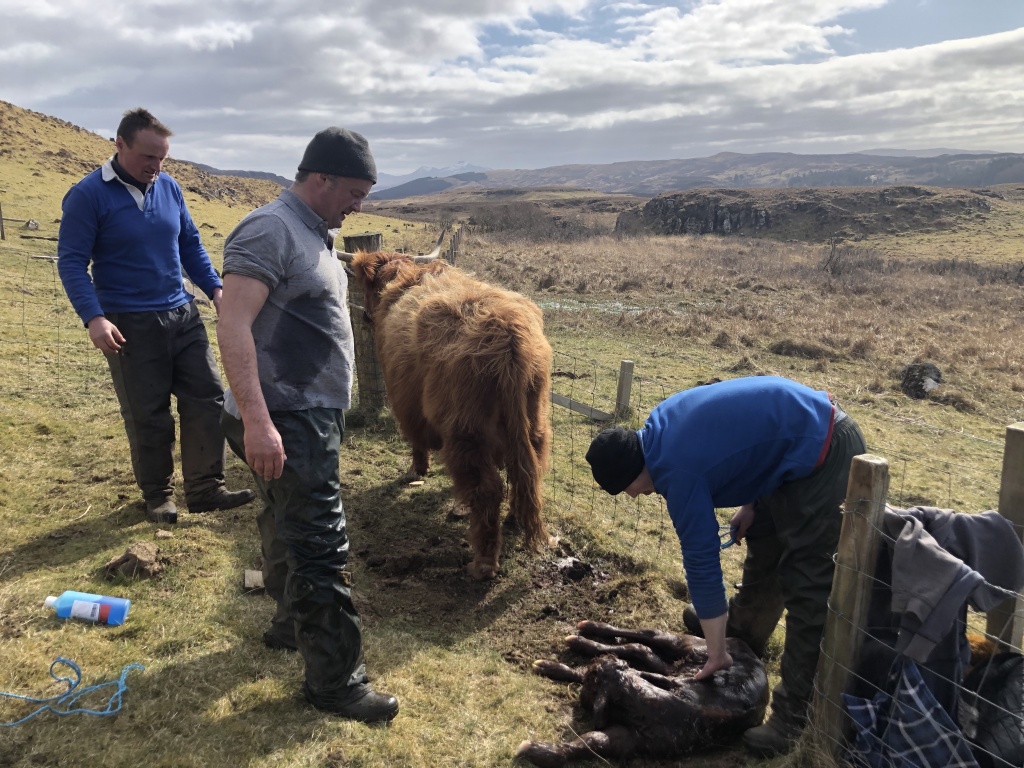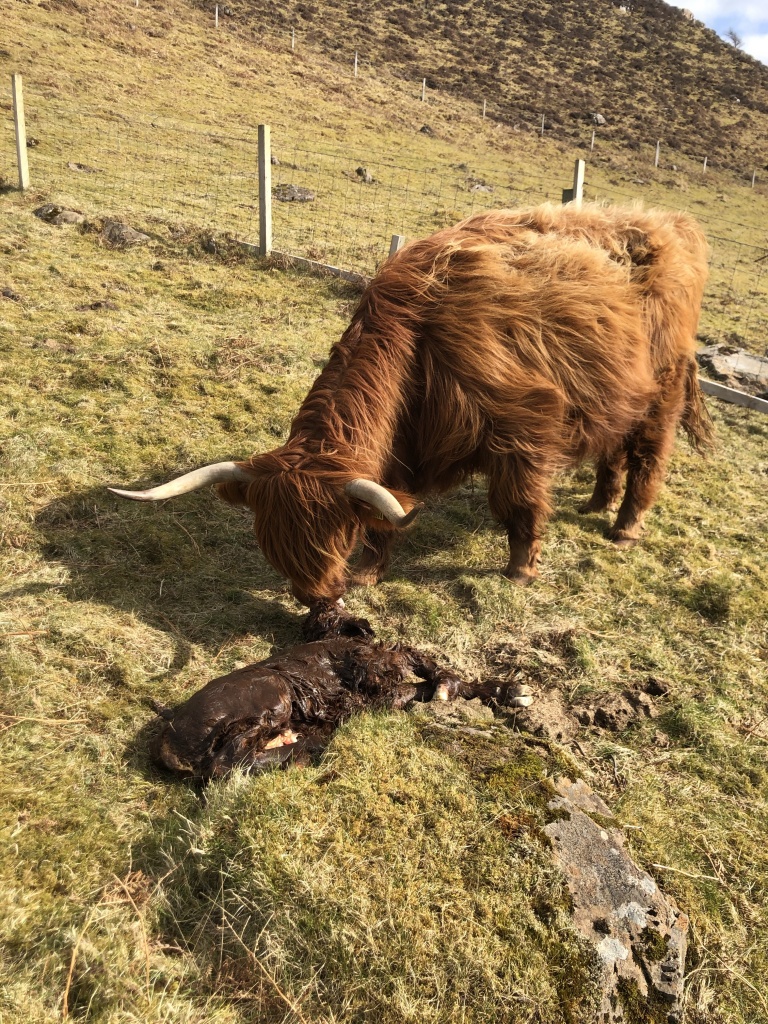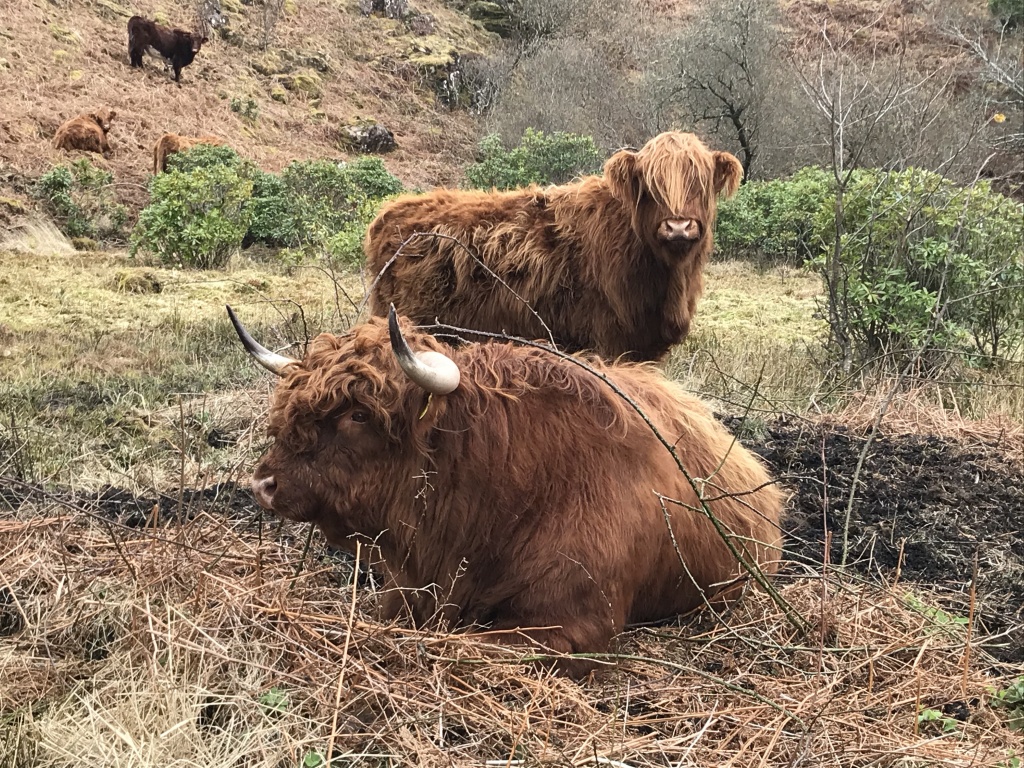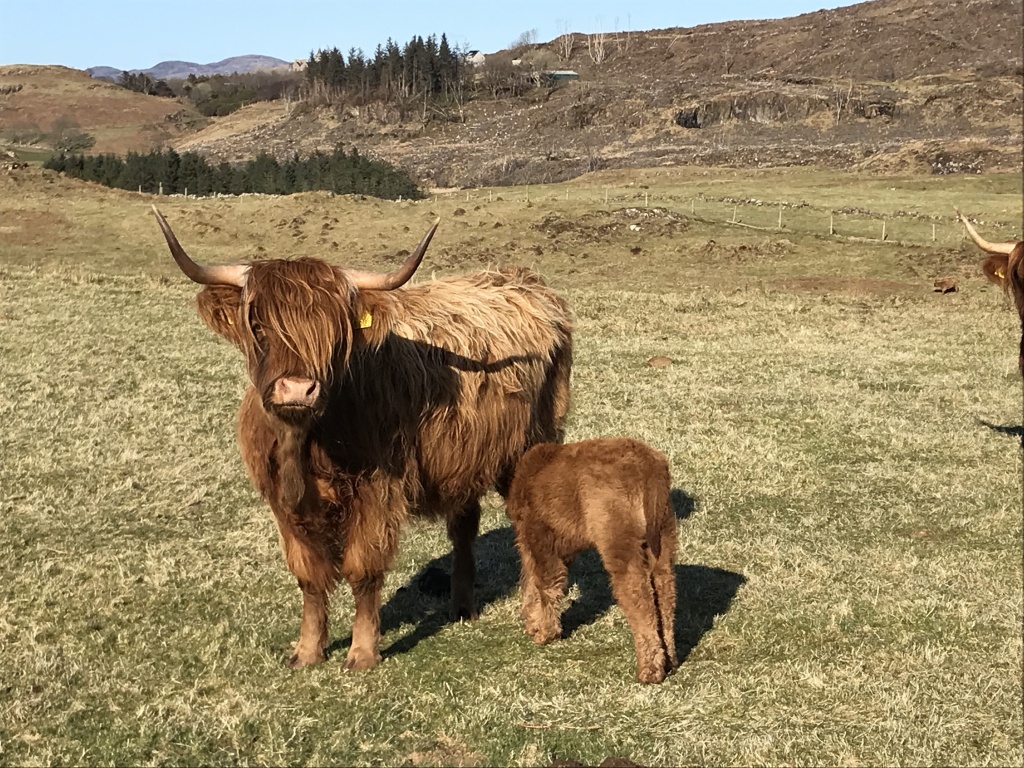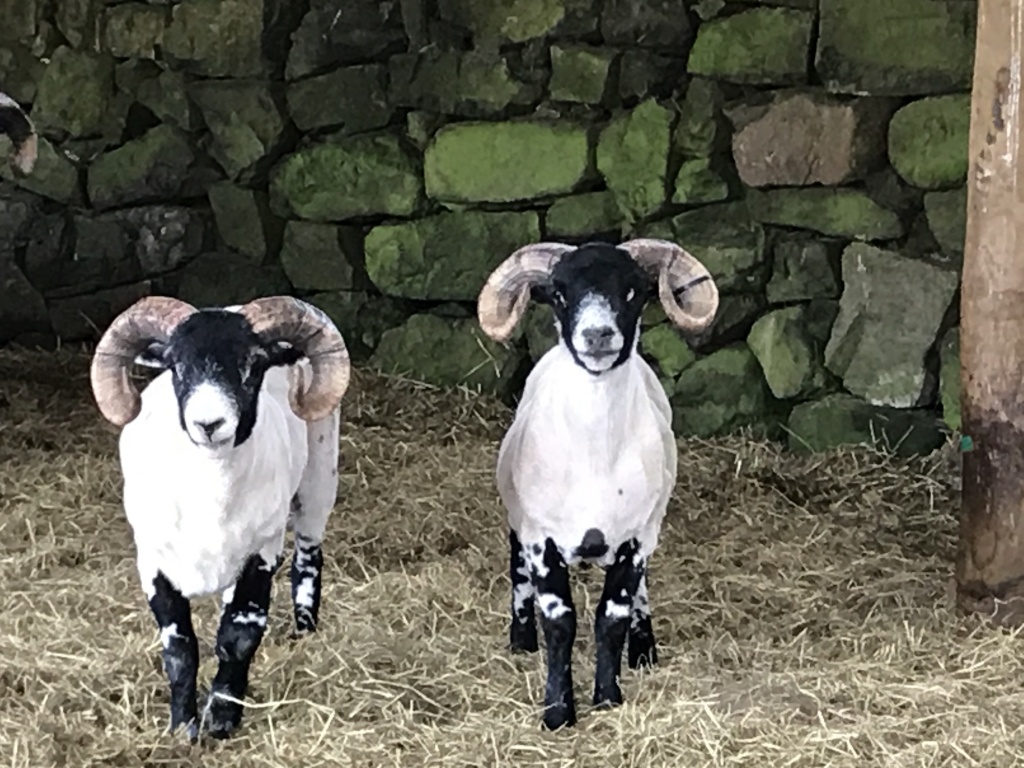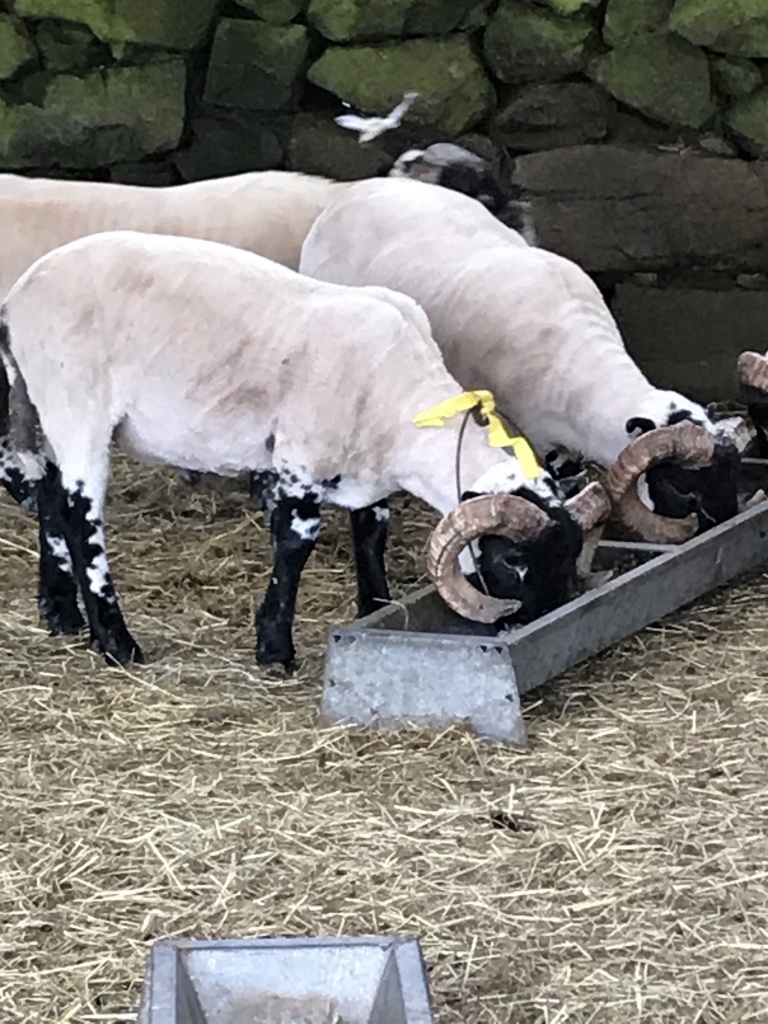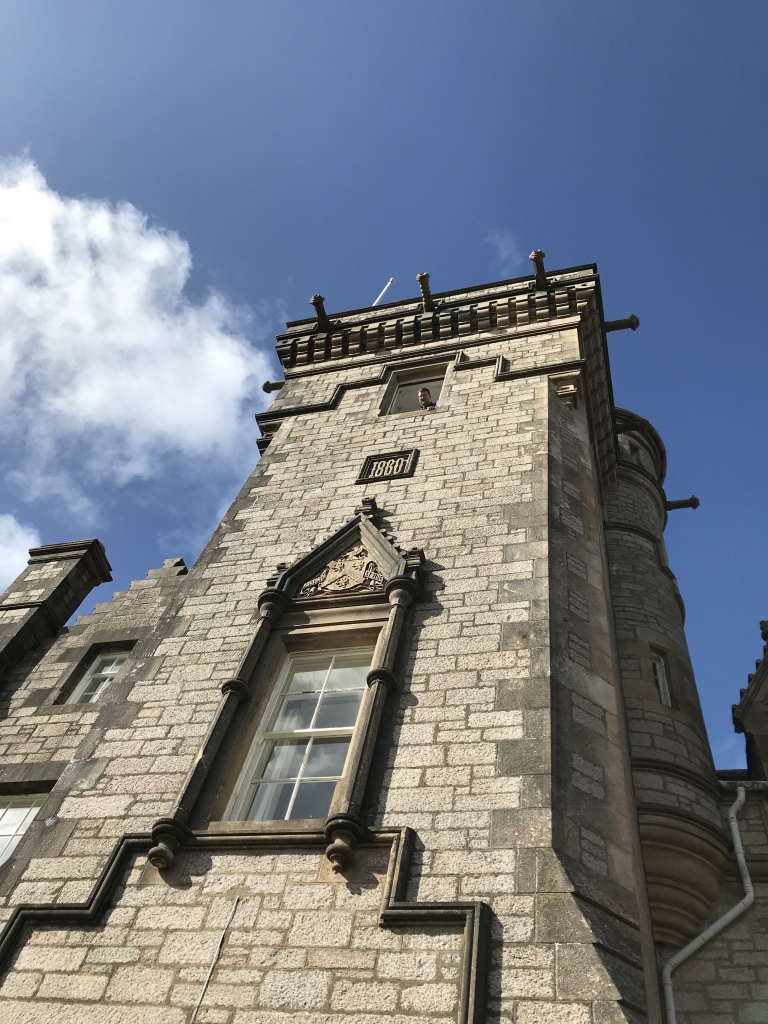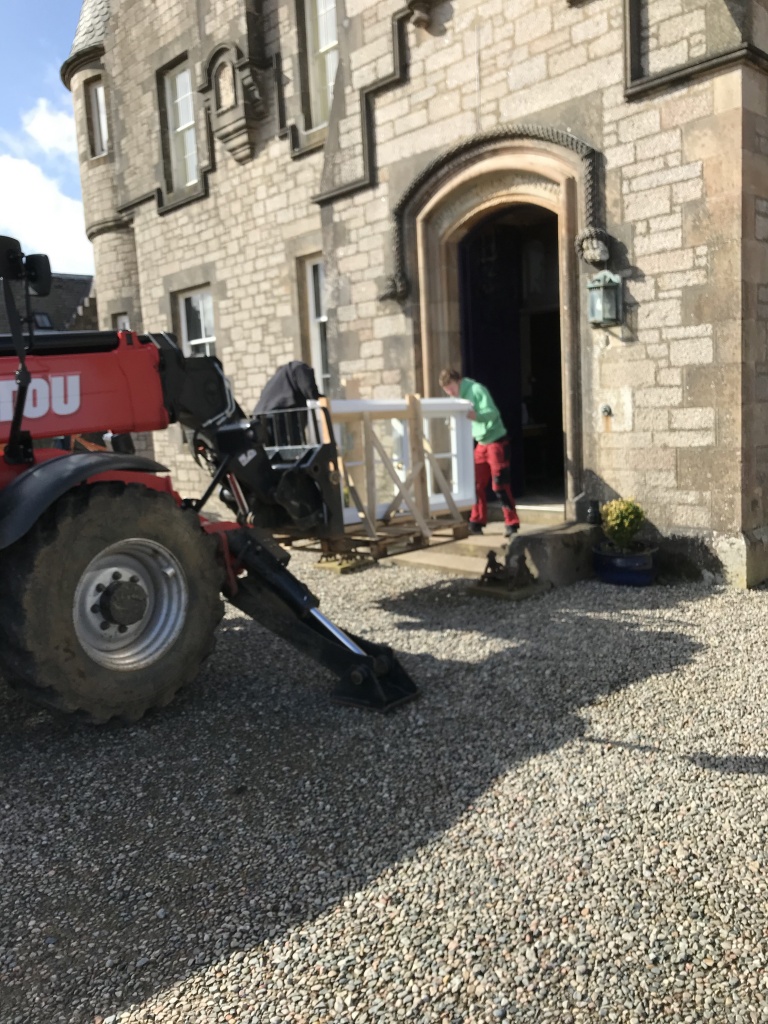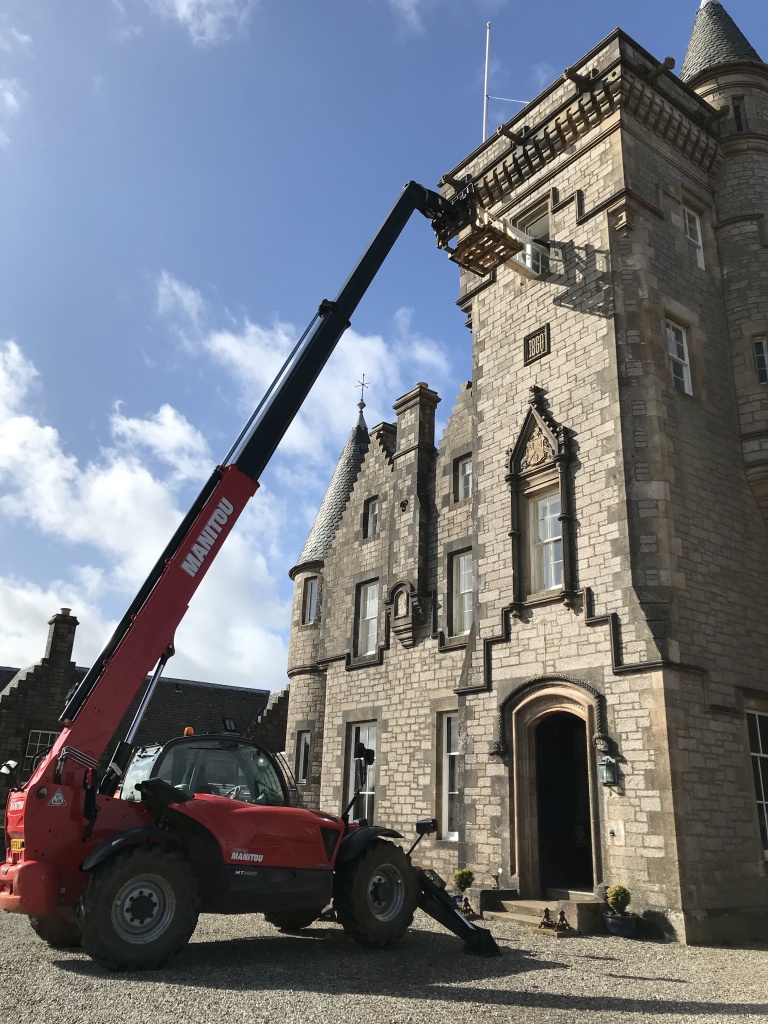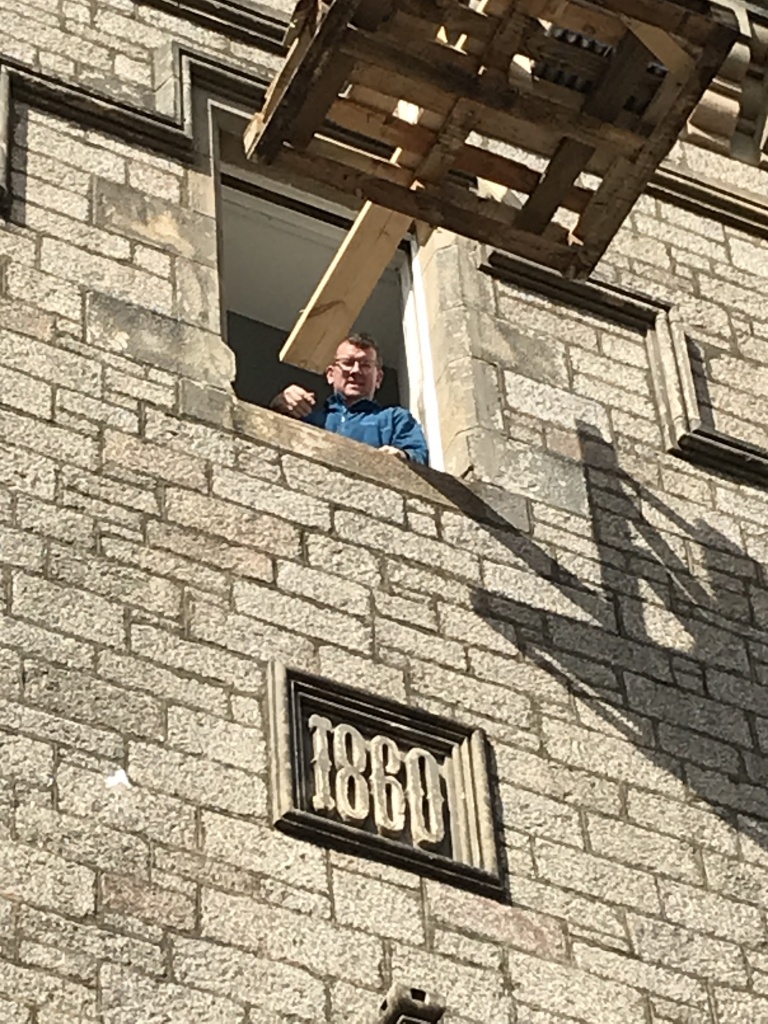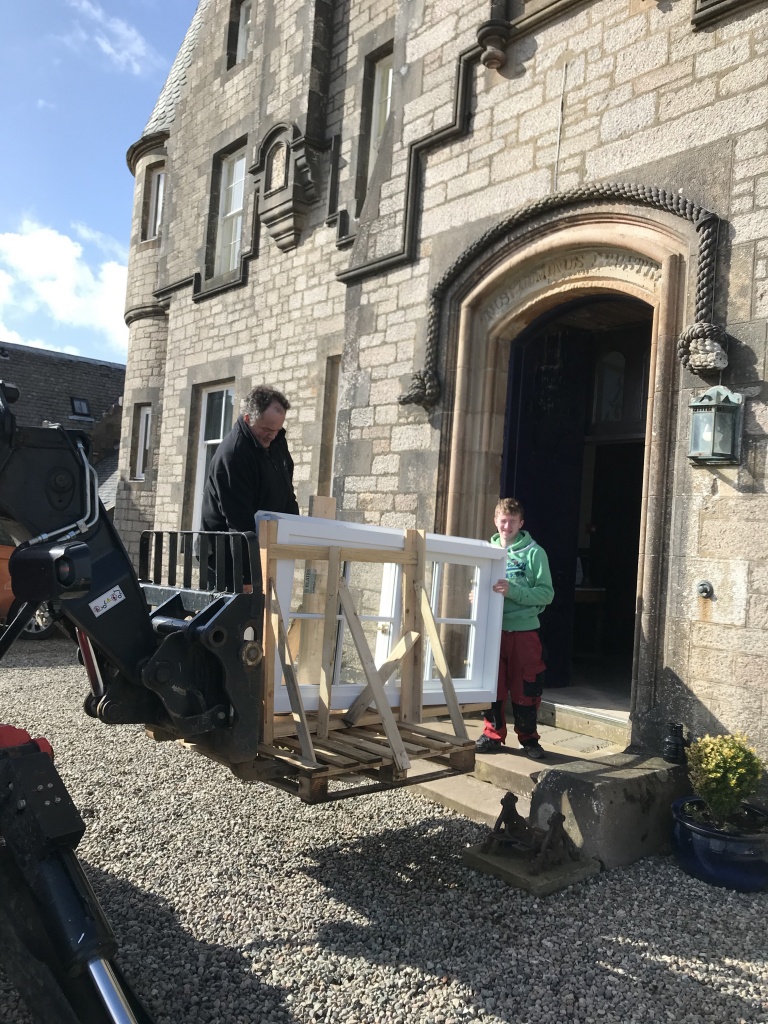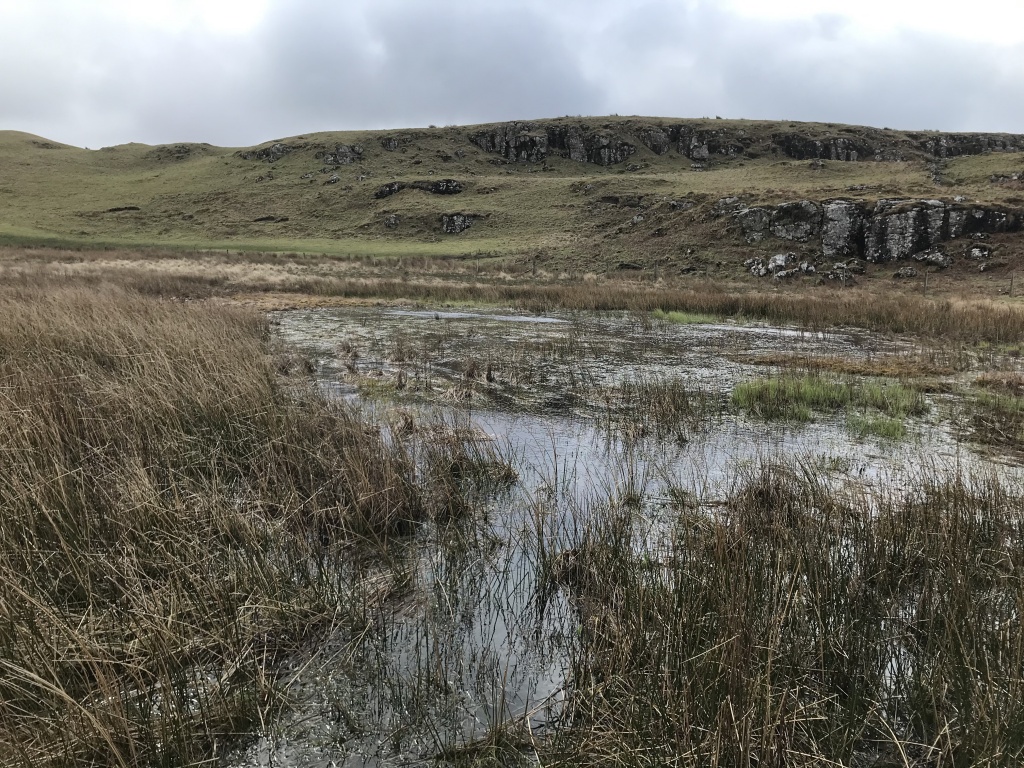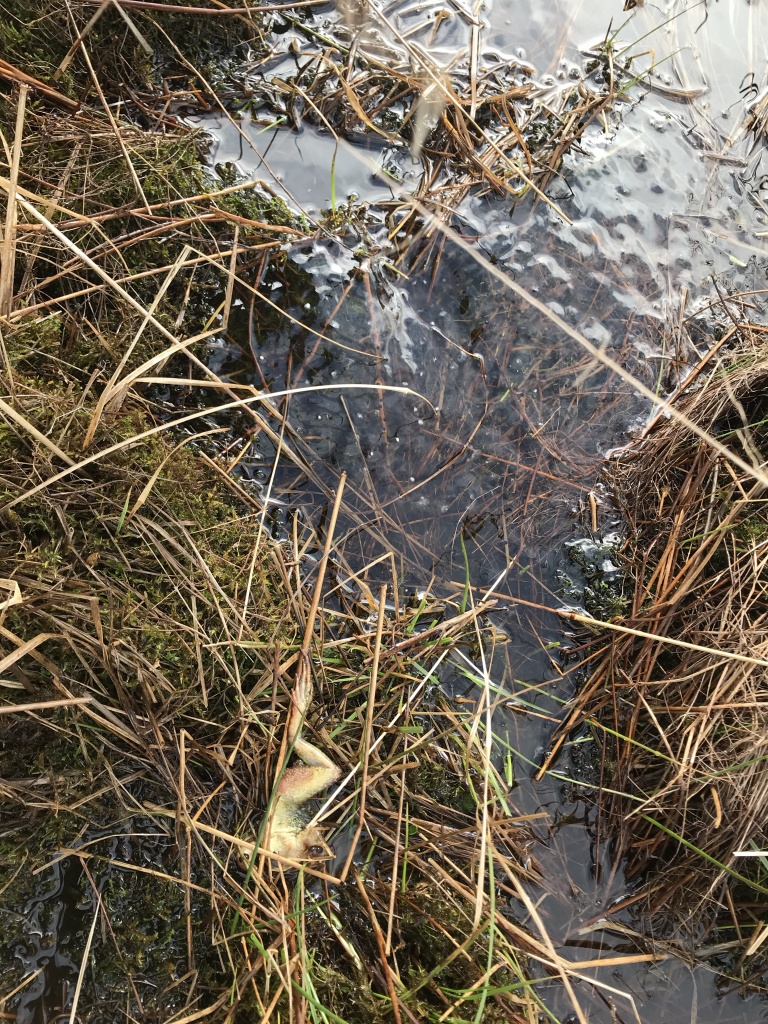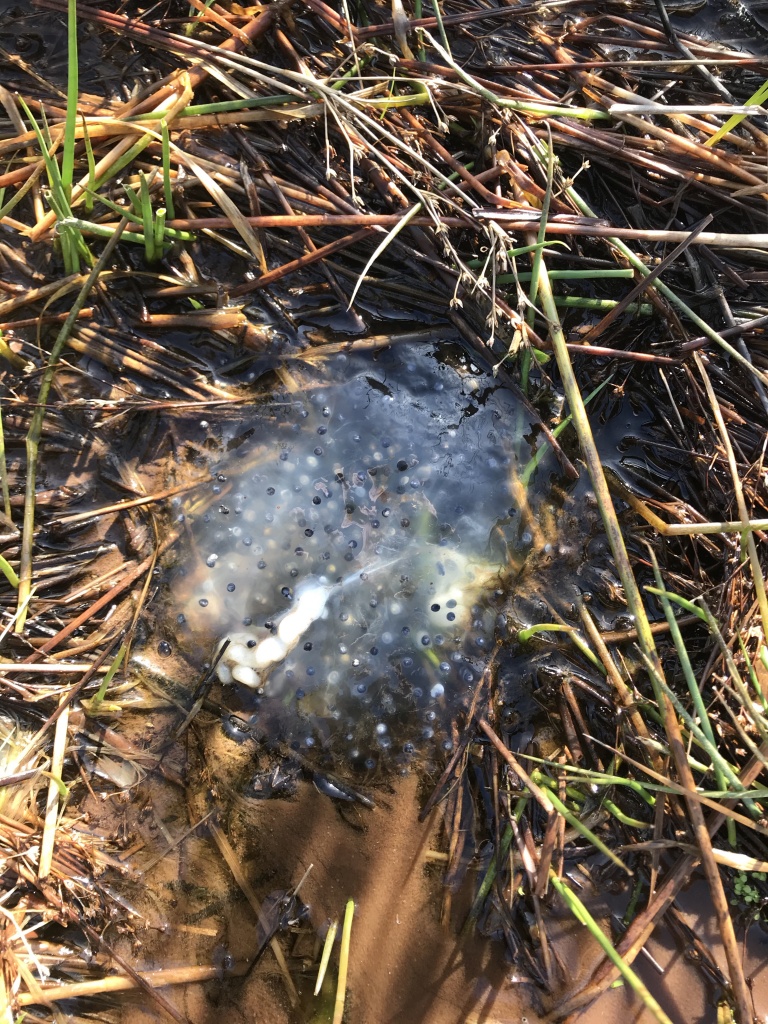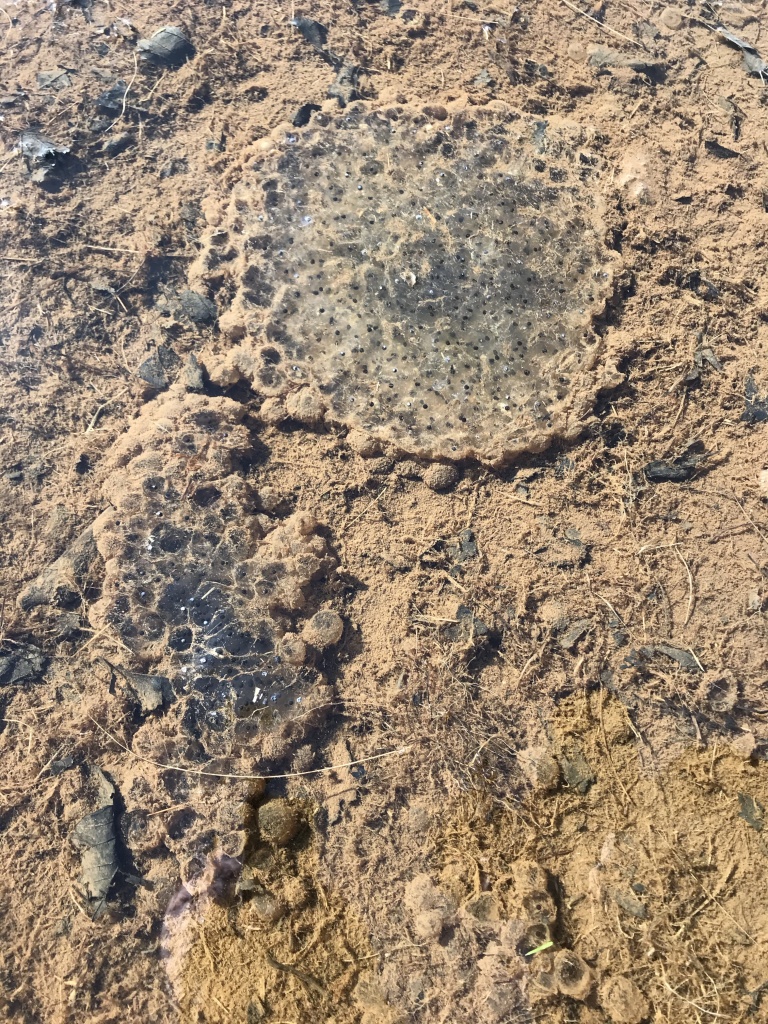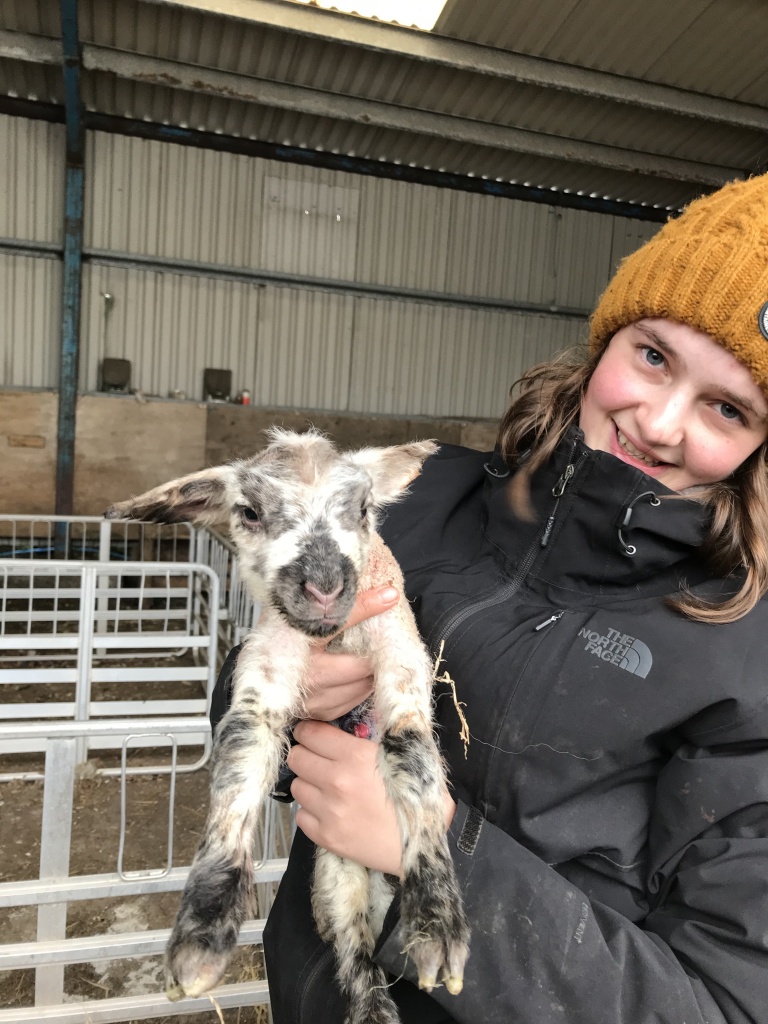
Yesterday, we had our first lambs!! Lambing this year has not had a smooth start, but it got off the mark with 2 almost healthy lambs.
After our great scanning, we knew it would be difficult to keep the numbers high, and this year just prior to the start of lambing, about 10 of our ewes carrying twins have suffered prolapses. Prolapses occur in the last weeks of pregnancy and will occur in at least 1 in 100 sheep typically, so having 10 in our flock of 700 breeding ewes is high, and I am sure we haven’t seen the last of them.
A prolapse occurs when the ewe pushes her vagina out of her vulva. This appeared as a smooth red mass and can vary in size from a tennis ball and a melon.
The ewe that has given birth had a prolapse. To help her get to full term, we clean her up and use a prolapse spoon to push her prolapse back in and then this is tied in place and she can function pretty much normally with this in. This has a good success rate but needs to be monitored to ensure the ewe does not have any infection.
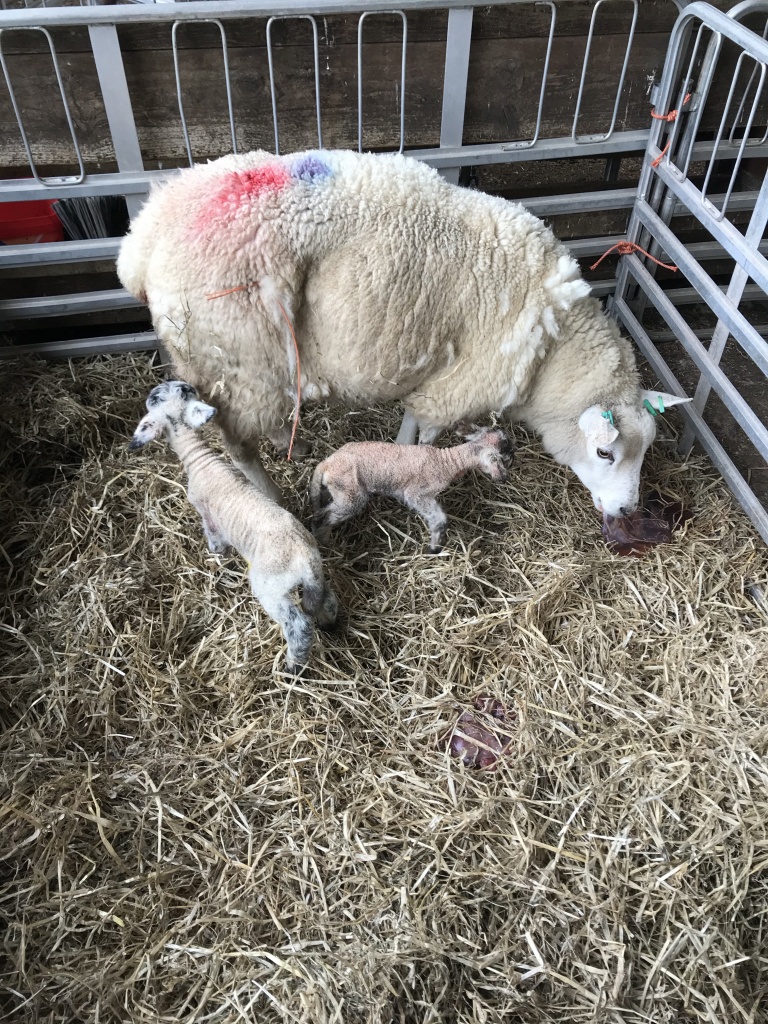
This sheep is a texel cross and at scanning she was marked up as having twins. She had to have help in delivering the twins, and one died at birth. She then stays in the maternity ward in the shed until mother and lambs are healthy and feeding and are then let loose. Whilst in the shed, she delivered a third lamb, which was much smaller and must have been missed in the scan. She had not long delivered the third one here and is seen eating her afterbirth.
There are various reasons that will cause a sheep to prolapse, multiple lambs, well fed sheep, bulky feed and lack of exercise. This particular sheep was in pretty good condition, but the fact that she has 3 lambs will have added to this. This winter has been pretty mild and all the sheep are in good condition. Due to the prolapse, she most likely has delivered the sheep a bit prematurely and doesn’t have a good milk supply. We had to feed the lambs with sheep formula and hope that her milk comes in.
Today we had another 19 lambs, (of which 3 died) lambing officially starts on the 3rd April so we are having a few earlies.
Calving is going great guns as well just now, and I am sure they are enjoying this spell of better weather. We had to intervene as one of our cows got into a bit of difficulty. On the daily rounds, it appeared she was in labour but only one foot was seen coming out of her so Tom had to help her birth. Normally during labour, both feet emerge, followed by the head and the rest of the body.
The cow was very calm and knew she needed help as she stood for them and let Tom get his arm in to pull out the other leg and manoeuvre the head which was facing backwards and causing the problem. The calf was born healthy.
